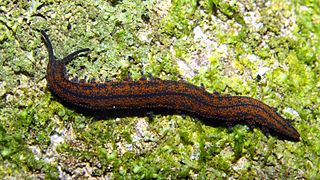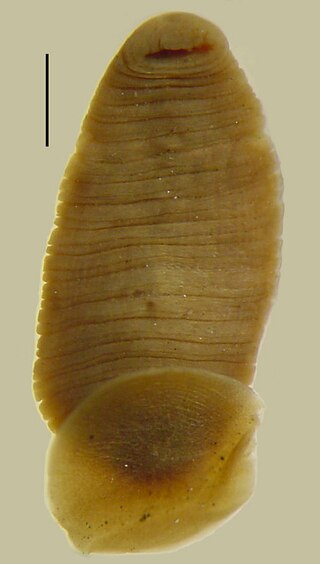
Leucosolenida is an order of sponges in the class Calcarea and the subclass Calcaronea. Species in the order Leucosolenida are calcareous, with a skeleton composed exclusively of free spicules without calcified non-spicular reinforcements.
Ecionemia is a genus of sea sponges belonging to the family Ancorinidae.

Peripatoides is a genus of velvet worms in the family Peripatopsidae, whose species are found in New Zealand. Like all velvet worms, these animals are nocturnal predators that spit a sticky slime to trap their prey. Species of Peripatoides have 14, 15, or 16 pairs of legs.

Parienia is a genus of moths belonging to the subfamily Olethreutinae of the family Tortricidae. This genus was described by Edward Meyrick in 1881. It consists of only one species, Parienia mochlophorana, which is endemic to New Zealand.

Stelletta is a genus of sea sponges belonging to the family Ancorinidae.
Biemna is a genus of sea sponges in the family Biemnidae.

Myxilla is a genus of demosponge belonging to the family Myxillidae. These sponges usually form encrustations on rock surfaces.

Cinachyrella is a genus of marine sponges in the family Tetillidae.
Antiponemertes is a genus of nemertean worms that contains the following species:

Orocrambus callirrhous is a moth in the family Crambidae. It was described by Edward Meyrick in 1883. It is endemic to New Zealand. It has been recorded from the eastern and central part of the South Island and the coast near Wellington and Whangārei on the North Island.

Orocrambus ramosellus is a moth in the family Crambidae. It was described by Henry Doubleday in 1843. It is endemic to New Zealand, where it has been recorded in the North and South Islands. The habitat of this species consists of pastures.

Marquis Dendy is an American track and field athlete, primarily known for horizontal jumping events. He is the 2015 National Champion in the Long jump. His winning jump, of 8.68 m, though wind aided at +3.7mps, his first jump of the competition, was the longest jump in the world under any conditions in over 5 years. He grew up in Middletown, Delaware.
Artioposthia diemenensis, also known as Van Diemen's flatworm, is a species of land planarian in the tribe Caenoplanini. It has been found in southern Australia, including Tasmania.
Culiseta novaezealandiae is a species of mosquito. It is endemic to New Zealand. It is found in Southland and Otago. This species was first described by J. S. Pillai in 1966 using specimens collected at Tahakopa. The habitat of this species in its larval stage is coastal broadleaf swamp. It has been hypothesised that the hosts of C. novaezealandiae are birds. This mosquito species is regarded as being unlikely to be an arbovirus vector.

Urechidae is a family of spoonworms in the subclass Echiura. The only genus in the family is Urechis, which has four species.
Halichondria schmidti is a species of sea sponge belonging to the family Halichondriidae.
Halichondria arenacea is a species of sea sponge belonging to the family Halichondriidae.

Chondropsis is a genus of sponges belonging to the family Chondropsidae.
Fibulia is a genus of sponges belonging to the family Dendoricellidae. The species of this genus are found in Southern South Hemisphere.

Torix is a genus of Rhynchobdellid leeches in the family Glossiphoniidae, found in Eastern Asia and Japan. Rana japonica, the Japanese brown frog, is the main host of T. tagoi.












